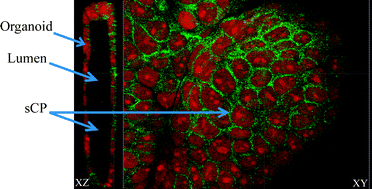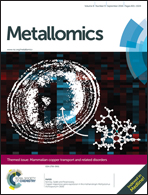Ceruloplasmin is regulated by copper and lactational hormones in PMC42-LA mammary epithelial cell culture models
Abstract
Ceruloplasmin (Cp) is a multicopper ferroxidase that is considered to be an important source of copper in milk for normal neonatal development. We investigated the expression, subcellular localization and secretion of Cp in PMC42-LA cell culture models representative of resting, lactating and suckled human mammary epithelia. Both secreted Cp (sCp) and plasma membrane associated glycosylphosphatidylinositol-linked Cp (GPI-Cp) were expressed in PMC42-LA cells. In all three epithelial models (resting, lactating and suckled), the expression and secretion of copper-bound, ferroxidase active, Cp (holo-Cp) was dependent on media copper concentration. In low copper (bathocuproinedisulphonic acid/D-penicillamine treated models) there was greater than a 2-fold decrease in holo-Cp expression and secretion, which was mirrored by a 2-fold increase in the expression and secretion of copper-free Cp protein (apo-Cp). Cell surface biotinylation studies revealed that the state of PMC42-LA cell differentiation (functionality), and the level of extracellular copper, had no significant effect on the level of plasma membrane bound GPI-Cp. Quantitative real time PCR analyses determined that there was no significant (P > 0.05) difference in Cp mRNA levels across all copper conditions investigated (0, 5, 50 μM). However, there was a significant (P < 0.05) increase (∼2-fold) in Cp mRNA in both the lactating and suckled models in comparison to the resting model. Furthermore, the Cp mRNA increase in response to PMC42-LA differentiation corresponded with more secreted Cp protein, both apo and holo forms, indicating a link between function and Cp requirement. Our results provide significant insight on the regulation of Cp expression and secretion in lactation and copper incorporation into milk.

- This article is part of the themed collection: Mammalian Copper Transport and Related Disorders

 Please wait while we load your content...
Please wait while we load your content...